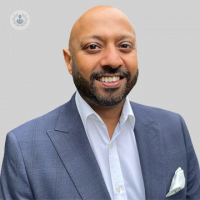Smile enhancing procedures: Insight from a leading specialist
Written in association with:Thanks to scientific advances, smile enhancement techniques are improving outcomes for patients in a number of ways. To explain more, we invited revered implant and restorative expert and dentist Dr Max Rahman to shed light on the applications of smile enhancing procedures and the key factors involved in creating treatment plans and achieving successful outcomes for patients.

How is smile enhancement used in dentistry?
Smile enhancement comes from a background of lots of scientific research. Nowadays, there are many forms of programming that we can introduce into computer systems which allow us to simulate smiles on patients before we've actually done begun any dental work.
The available enhancement techniques we have at our disposal are quite phenomenal. There are many types of computer-based smile enhancement that patients can actually be consulted with before we go ahead with any treatment and this lets us explore lots of options together.
How do these procedures enhance the aesthetics of a patient's smile?
Smile design is very scientific. There are a lot of different ways that we can enhance smiles but what I really love doing is producing natural-looking smiles. Simulations, however, don't always do that for us. In my practice, I use a computer programme and sit down with my patients, going through issues that they are experiencing, what their preferences are, and how they would like their smile to appear.
Which factors should be considered when determining the most suitable procedure for each individual patient?
Many of my patients come with multiple factors to be considered. Some people don't have enough teeth for function, whereas others may have discoloured teeth or misaligned teeth. Therefore, to take in to account all of these factors, we need to do a thorough assessment and then focus on which areas the patient actually requires me to fix. Some things that I think are critical may not be so in the patient's mind. As such, it’s down to me to give the patient a full understanding and make a conclusion that both of us are happy with.
Are there any potential risks or limitations?
Any type of medical intervention has risks. As a clinician, it's my responsibility to educate my patients and inform them of the risks. There are lots of minor risks and other more severe risks. However, with most treatment that I advocate for, my patients are fully aware of the benefits as well as the risks. Importantly, we always try to make sure that the benefits outweigh all the risks involved.
How do dentists collaborate with their patients to achieve their smile goals?
My first consultation with patients is always very detailed and we go into a lot of things that most other clinicians don't necessarily pay attention to. Specifically, I'll be looking at details that they would like to enhance and reasons why they would like to do so. Some patients may appear on television or on the stage, while others may be very client facing and find that there's an obstacle with how they present themselves. Getting acquainted with the reasons why a patient wants to have enhancements, or indeed why they want to improve their function, really helps me to nail down how I can best produce a clinical treatment that will help them.
If you think you could benefit from a smile enhancing procedure and wish to schedule a consultation with Dr Rahman, you can do so by visiting his Top Doctors profile.


